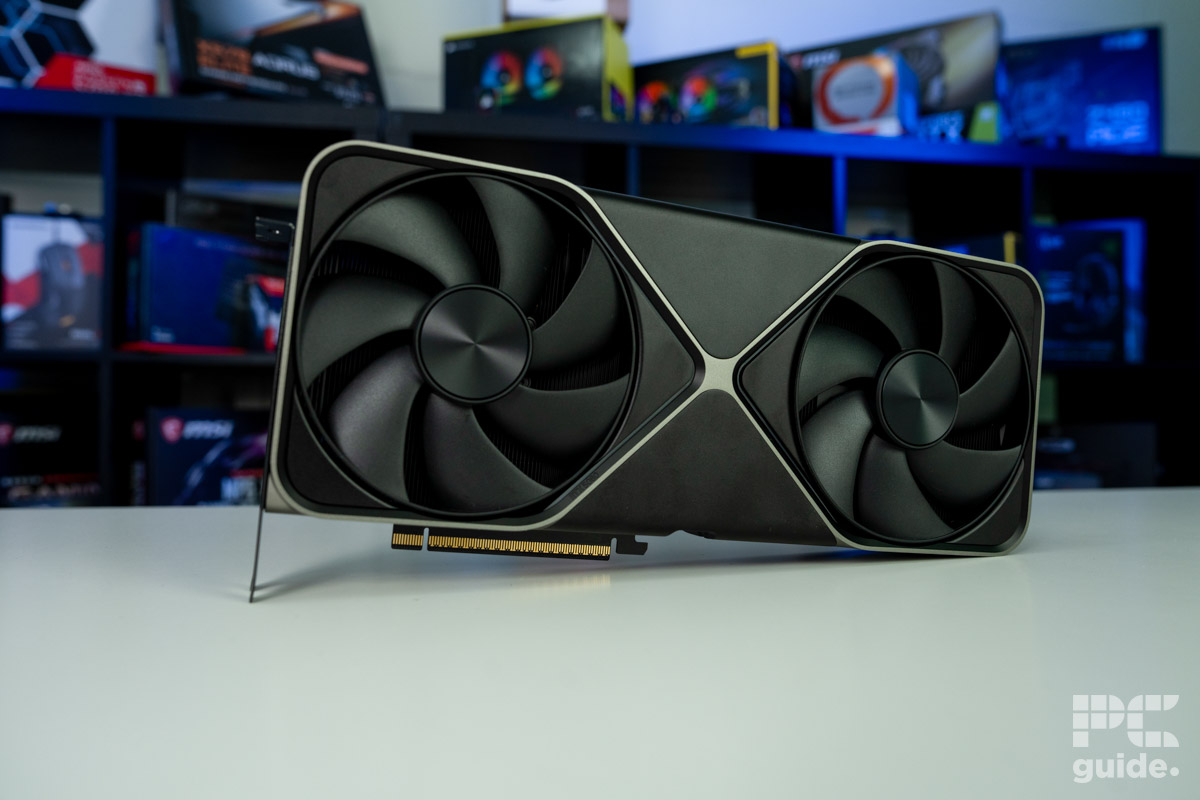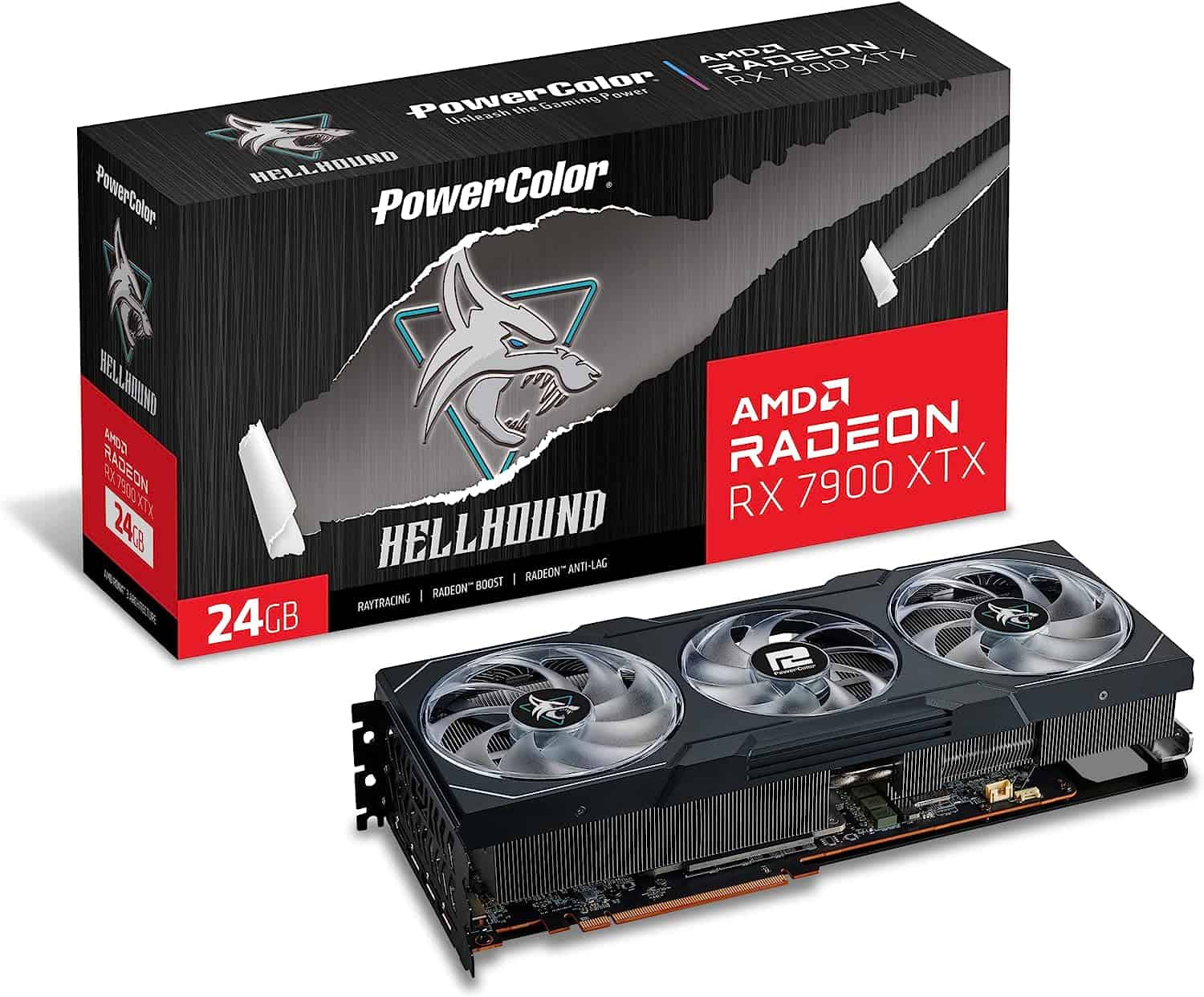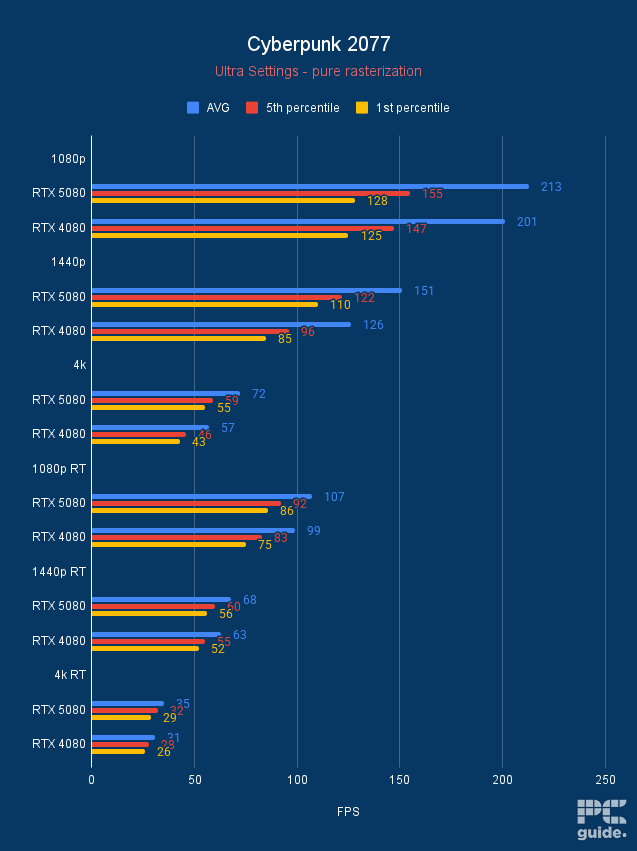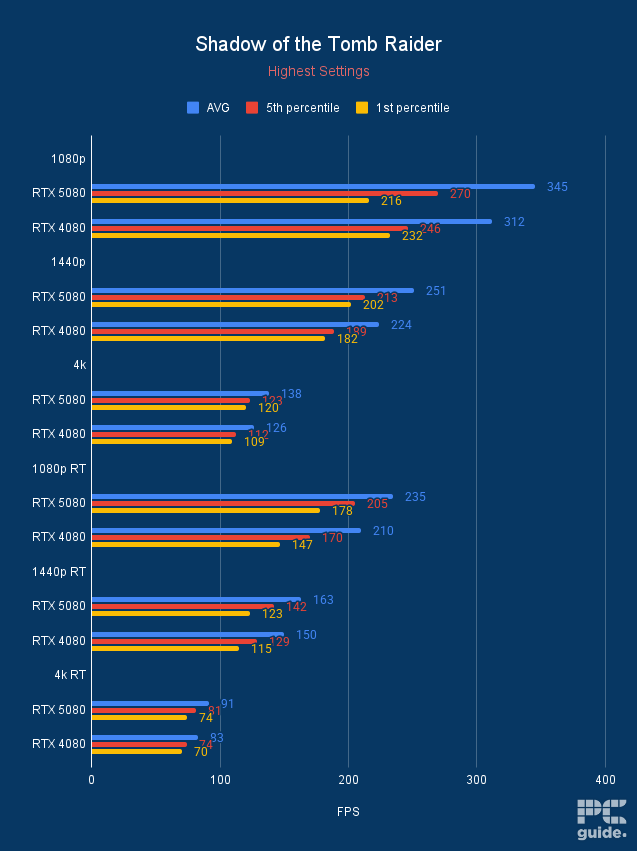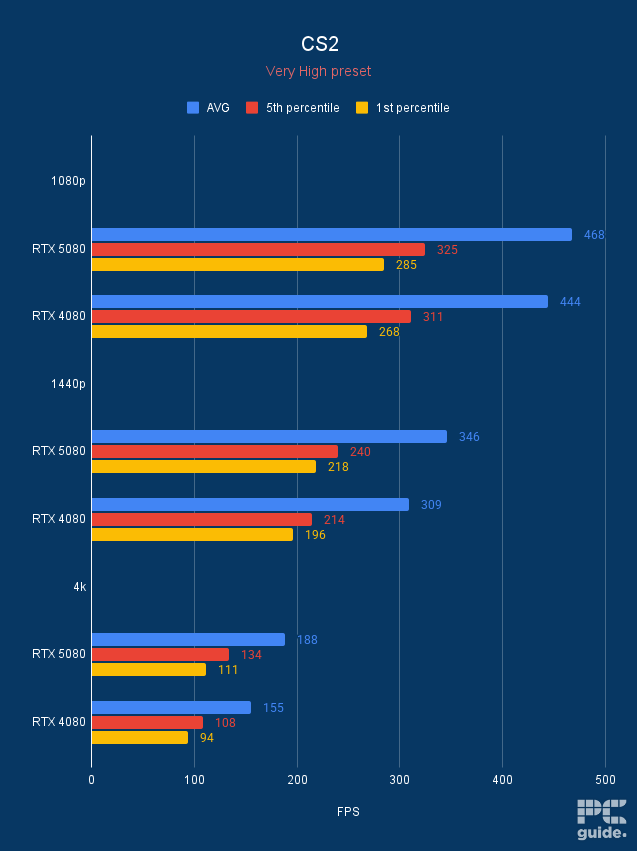RTX 5080 vs RX 7900 XTX specs and performance comparison – how do they compare?
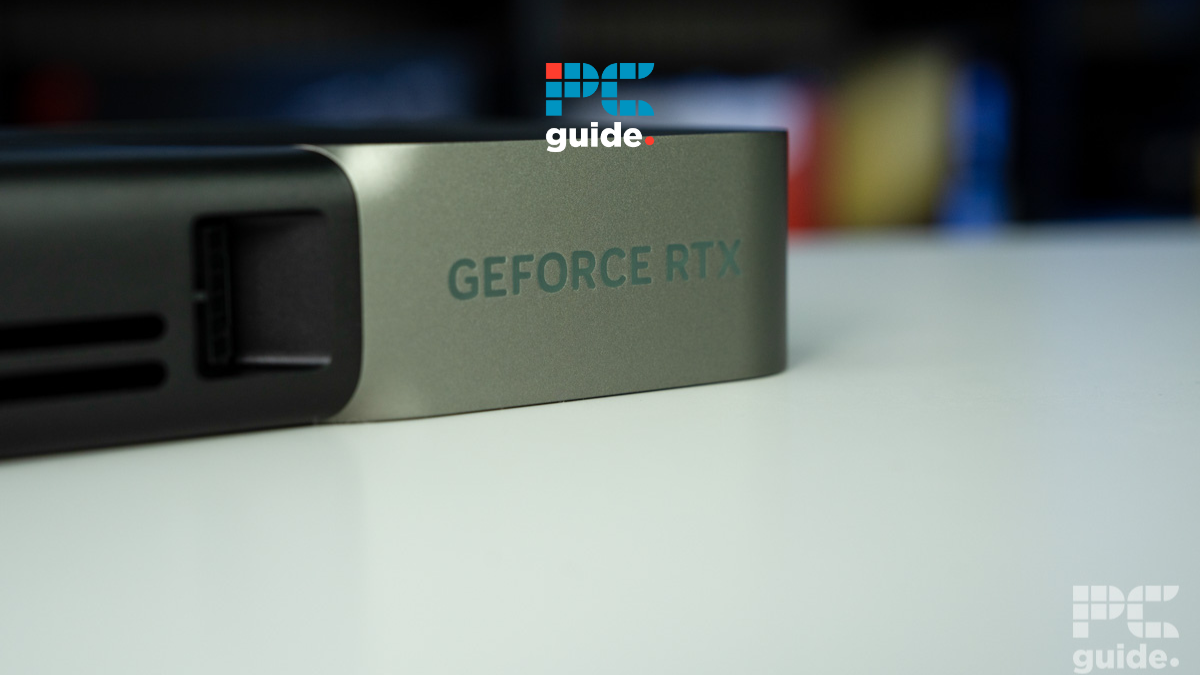
Table of Contents
The RTX 5080 has finally launched, and it displayed excellent synthetic and gaming performance in our RTX 5080 review. In addition, the refinements of Nvidia's AI technologies took its performance to the next level, so we're wondering how the top card from AMD, the RX 7900 XTX, would fare against the RTX 5080.
We've reviewed the RX 7900 XTX in-house, and its native performance almost matches that of the RTX 4090. We’ve also put the RTX 5080 through its pace in our testing lab, and despite having the same VRAM as the RTX 4080, it outperformed it by quite a margin, so we’re even more curious as to how it’ll stack against the Team Red’s flagship. We’ve got all the performance benchmarks necessary to draw a clear and accurate comparison, so without further ado, let’s get right to it.
If you're wondering where to buy the RTX 5080 as soon as it is released, we've got you covered.
Specs comparison
We've listed some of the specifications of the RTX 5080 and the RX 7900 XTX.
| Specifications | RTX 5080 | RX 7900 XTX |
| Cores | 10752 | 6144 |
| Base clock speed | 2.30 GHz | 2.3 GHz |
| Boost clock speed | 2.62 GHz | 2.5 GHz |
| Memory | 16GB GDDR7 | 24GB GDDR6 |
| Memory interface | 256-bit | 384-bit |
| Bandwidth | 960.0 GB/s | 960.0 GB/s |
| TDP | 360W | 355W |
| Measurements | 304 mm x 137 mm x 40 mm | 287 mm x 110 mm x 51 mm |
| Release date | 30th January 2025 | 13th December 2022 |
Memory
The first and most significant difference between the RTX 5080 and RX 7900 XTX is the VRAM. The RTX 5080 has 16GB GDDR7 memory, while the RX 7900 XTX has 24GB GDDR6 memory. While GDDR7 is faster, with a per-pin speed of 32 GB/s, GDDR6 trails behind, with half of that with 16 GB/s.
However, the RX 7900 XTX has 8GB extra VRAM than the RTX 5080, meaning it can process more game data than the 5080, which should put them close in performance. That being said, in our RX 7900 XTX review, it managed 70 FPS in Cyberpunk 2077 at 4K natively, which is only 4 FPS less than the RTX 4090.
So, this should give you an idea of how powerful the RX 7900 XTX is, and while its Ray Tracing and productivity output aren't at the same level, it can go toe-to-toe with the 4090 in gaming. We expect the 7900 XTX to give a good amount of trouble to the 5080 in gaming as well.
Core and clock speed
The RTX 5080 and RX 7900 XTX have 10752 CUDA cores and 6144 Stream Processors, respectively. Based on two different architectures, there can't be a direct comparison for the cores; however, the clock speed can impact the performance of the GPU.
Both of these GPUs have the same base clock speed, and the boost clock speed is only 0.15 GHz faster for the RTX 5080. This gap can be bridged by overclocking the GPU. So, how this difference impacts the performance and who comes out on top, will only be answered when we've tested the RTX 5080 in-house, but for now, the RX 7900 XTX should have the upper hand in raw performance.
Memory interface width
There is also a significant difference in the memory interface width of these cards. The RTX 5080 has a 256-bit connection, while the RX 7900 XTX has a 384-bit connection. This difference is 128 bits and can spell better performance, as more lanes are available for the data to travel on in the 7900 XTX.
The more lanes there are, the more data can be processed without causing a bottleneck, and while the core count, clock speed, and bandwidth, which is the same for both, also play into it, if we look at just the connection, the RX 7900 XTX has a clear advantage.
Performance
Now, let’s discuss the performance of the cards to learn how they stack up against each other in different games. As the 7900 XTX is a high-end card, we tested it in Cyberpunk 2077, which is a demanding game and requires top-tier hardware for smooth performance at higher resolutions. At 1440p, with DLSS disabled and everything set to Ultra, we got around 137 FPS. On the other hand, after we switched the resolution to 4K, the FPS dropped to 70, which was still pretty impressive.
Next, we launched Shadow of the Tomb Raider, which may not be as demanding as Cyberpunk 2077 but still requires decent hardware for smooth performance. At 1440p and 4K, the 7900 XTX delivered 263 and 147 FPS, respectively. In less demanding games like Counter-Strike, we got 389 FPS at 4K, which jumped to 609 at 1440p.
The RTX 5080 delivered 72 FPS at 4K and 151 FPS at 1440p in Cyberpunk 2077, which is a 2.8% and 7.2% increase in performance, respectively. In Shadow of the Tomb Raider, the RTX 5080 managed 251 FPS at 2K and 138 FPS at 4K, which is a difference of 4.6% and 6.3%, respectively, in favor of the RX 7900 XTX.
Both cards performed well in less demanding titles like Counter-Strike, but the RX 7900 XTX had significantly better output. The RTX 5080 got 346 and 188 FPS at 1440p and 4K, respectively, meaning the 7900 XTX had a 55% and 69% better performance.
Regarding synthetic performance, we look at the performance of these cards displayed in Fire Strike Ultra, Time Spy Extreme, and Port Royal. The first two tests gauge a GPUs ability to render 4K frames, while Port Royal tests how well a GPU can handle real-time Ray Tracing.
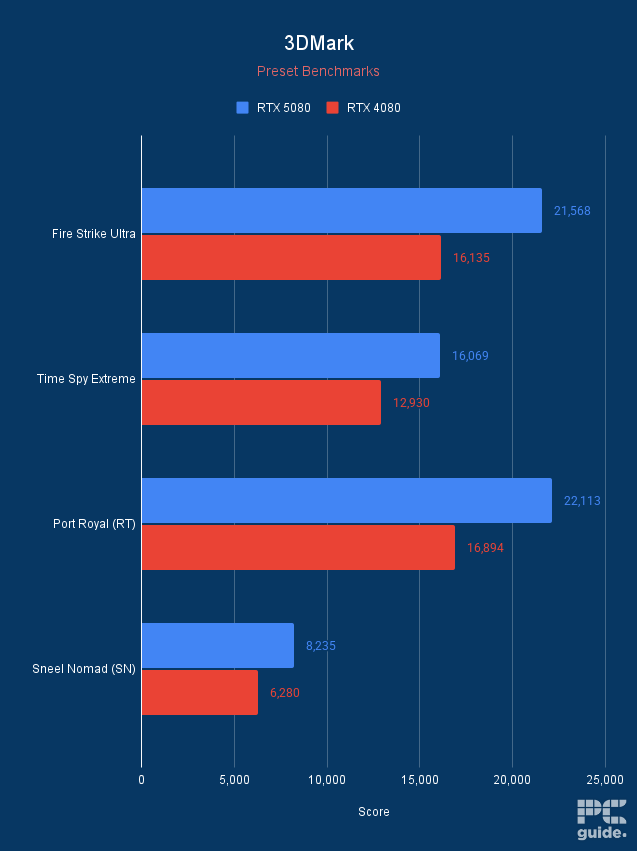
The RTX 5080 managed 21,568 points in Fire Strike Ultra, while the RX 7900 XTX managed 20,410 (a difference of 5.5%), which isn’t a lot but means that the RTX 5080 should have a slightly easier time rendering 4K frames. In Time Spy Extreme, the RTX 5080 delivered 16,069 points, while the RX 7900 XTX got 14,230 points, a 12% difference in favor of the RTX 5080 again.
Nvidia GPUs are known to have much better Ray Tracing performance than AMD GPUs, so we weren’t surprised to see the RTX 5080 dominating Port Royal with 22,113 points compared to the 7900 XTX’s 15,315. This makes the 5080 36% better than the RX 7900 XTX in Ray Tracing.
While we haven’t tested the RX 7900 XTX’s AI capabilities the RTX 5080 comes with next-gen Tensor cores, which are responsible for its AI output, so we’re expecting that it would have a better result than the RX 7900 XTX in that domain as well.
Sizing
The RX 7900 XTX measures 287 mm × 110 mm × 51 mm (L×W×H), while the RTX 5080 measures 304 mm × 137 mm × 40 mm. As you can see, the RTX 5080 is larger than AMD’s high-end card. However, despite its overall size, it is thinner due to its 2-slot design.
Nvidia has always increased the size of its cards with each generation, but thankfully, the RTX 50-series cards are almost similar in size compared to the previous generation. Thanks to the RTX 5080’s dual-slot design, it takes up less space on the motherboard compared to the 7900 XTX, which is a 2.5-slot card. This means you’ll be able to access other PCIe slots more easily on the motherboard.
Features
The RTX 5080 and RX 7900 XTX have their respective technologies in their arsenal; however, the RTX 5080 has DLSS 4 with Multi-Frame Generation and Reflex 2, while the 7900 XTX has FSR 3.1 and FSR 4 is said to be exclusive to the Radeon RX 9000 series GPUs only.
That being said, AMD claims that enabling FS3 Performace Mode with Frame Generation greatly reduced latency. In Forspoken Legacy at 4K with ultra-high Ray Tracing, it claims that the latency went from 81ms to 55ms. And that Avatar: Frontiers of Pandora experienced a 3.7x boost in performance with the same settings.
On the other hand, Nvidia showcased the difference in DLSS generations via a YouTube video on its channel. Running Cyberpunk 2077 without DLSS managed 27 FPS, while enabling DLSS 2 and 3.5 boosted the framerate to 71 and 142 FPS, respectively. However, the latest iteration of DLSS took that even higher to 243 FPS, which is a massive boost in FPS.
So, DLSS 4 should give the RTX 5080 a significant edge over the RX 7900 XTX, as it only has the FSR 3.1 to work with. It might get FSR 4, just like how the previous Nvidia GPUs get DLSS 4 and Reflex 2 later on, but we can't say for sure.
RTX 5080 vs. RX 7900 XTX – price comparison
The RTX 5080 and RX 7900 XTX have a $999 MSRP. So, in terms of price, they are the same, but with the RX 7900 XTX, you're getting more VRAM, a better interface connection, and a slightly lower TDP.
However, at the same price, the RTX 5080 offers a faster memory type and more refined AI technologies. So, if you're looking for raw gaming performance, the 7900 XTX should be a good option. Third-party variants of the 5080 might be expensive, but if you want the latest AI solutions, the 5080 is the way to go.
Final word
The RTX 5080 and RX 7900 XTX both have their pros and cons, but the RTX 5080 took home more victories than the RX 7900 XTX in gaming and synthetic performance. On top of that, it costs less than the 7900 XTX, meaning it is a much better value pick, and the inclusion of DLSS 4 and MFG means that it can punch above its weight class.
